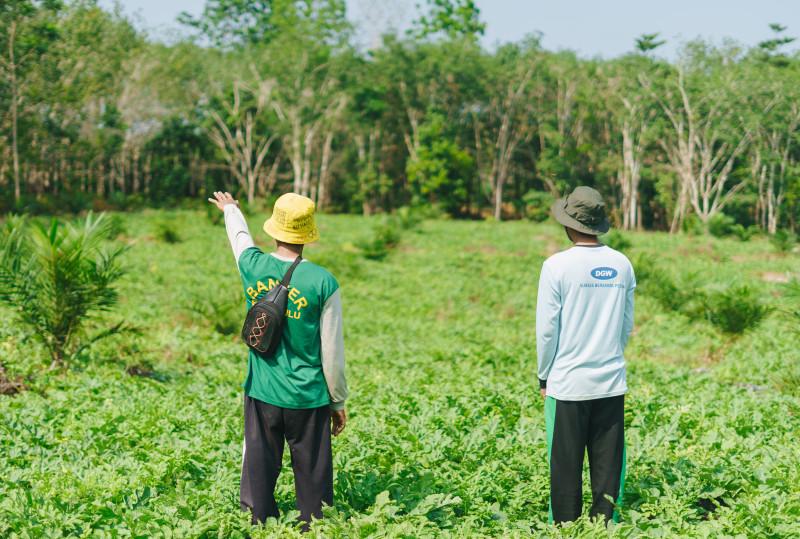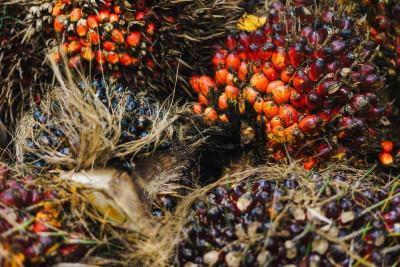
Introduction: A Contested Commodity
Few agricultural commodities generate as much debate as palm oil. For some, palm oil symbolizes environmental destruction—deforestation, endangered species, carbon emissions, and exploitative labor practices. Campaigns in Europe and North America often depict palm oil as a “villain” in the global food system.
Yet on the ground in Southeast Asia, palm oil tells a very different story. In Indonesia and Malaysia, where over17 million people depend on the crop for their livelihoods, palm oil is not an enemy but a necessity. For smallholder farmers, it is often the only path out of poverty and into economic inclusion.
This stark contrast betweenglobal criticismandlocal livelihood realitiesforms the heart of the palm oil debate.
The Anti-Palm Oil Narrative: Why Some Call Palm Oil “Evil”
1. Deforestation and Biodiversity Loss
Palm oil expansion has historically replaced tropical forests, leading to habitat destruction for orangutans, tigers, and elephants.
NGOs highlight satellite images showing forest clearance in Sumatra and Borneo.
This narrative links palm oil to biodiversity collapse and global climate change.
2. Carbon Emissions and Peatland Fires
Clearing peatlands for plantations releases massive amounts of CO?.
Fires during El Niño years are often blamed on palm oil expansion, with smoke drifting across Southeast Asia.
Environmental groups argue that palm oil undermines global climate targets.
3. Labor and Human Rights Issues
Reports from some plantations highlight poor working conditions, child labor, and land conflicts with Indigenous communities.
Activists frame palm oil as a human rights issue, not just an environmental concern.
4. Consumer Campaigns in Europe
Supermarket chains in the EU label products as “palm-oil free,” appealing to eco-conscious consumers.
Viral campaigns (e.g., the banned “Rang-tan” orangutan ad in the UK) reinforce the idea that palm oil is inherently destructive.
This“palm oil is evil”message has gained traction in Western markets, shaping policies such as theEU Deforestation Regulation (EUDR)and restrictions on palm oil biodiesel.
The Reality on the Ground: Palm Oil as Livelihood
For millions of Indonesians and Malaysians, palm oil is not an abstract debate—it is survival.
1. Smallholders at the Core
Around40% of global palm oil productioncomes from smallholder farmers.
In Indonesia alone, more than4.5 million smallholderscultivate oil palm.
Average land size is 2–4 hectares, and yields provide steady income compared to subsistence crops.
2. Poverty Reduction
Studies show smallholder households engaged in palm oil earn2–3 times higher incomesthan those relying on traditional crops like rice or cassava.
Palm oil has lifted millions out of poverty, especially in rural Sumatra and Kalimantan.
3. Infrastructure and Rural Development
Oil palm development often bringsroads, schools, and healthcare accessto remote villages.
Plantation income stimulates local businesses and services.
4. Food Security
Palm cooking oil is the cheapest edible oil in Indonesia, crucial for food affordability.
Without palm oil, domestic households would face higher costs for basic cooking needs.
For these communities, palm oil isnot an environmental villainbut a lifeline.
The Clash of Perspectives: Global Activism vs Local Reality
Global View
Palm oil is often reduced to a symbol of deforestation.
Campaigns focus on rainforest destruction and charismatic wildlife, which resonate with European consumers.
Calls for boycotts ignore the broader context of rural livelihoods.
Local View
Farmers see oil palm as atool of empowerment—a path to education for their children and better living standards.
A ban or boycott would not “save forests” overnight but would devastate millions of farming families.
For many, anti-palm narratives feel likeenvironmental colonialism—Western standards imposed on the Global South.
The reality is nuanced: both perspectives hold truth. Palm oil expansion has caused environmental harm, but it is alsoindispensable for rural economies.
The Way Forward: Reconciling Sustainability and Livelihoods
The challenge is not choosing between forests and farmers but creating a system where both can thrive.
1. Strengthening Certification (RSPO and ISPO)
RSPO provides internationally recognized sustainability standards.
ISPO is Indonesia’s national mandatory scheme, aligning palm oil with local regulations.
Wider adoption, especially by smallholders, is essential for global credibility.
2. Smallholder Empowerment
Financing, training, and cooperative models are needed to help farmers adopt best practices.
Simplifying certification processes and subsidizing costs can increase smallholder participation.
3. Embracing Regenerative Practices
Intercropping oil palm with food crops improves soil health and diversifies farmer income.
Agroforestry approaches maintain biodiversity and carbon stocks.
Sustainable intensification—raising yields on existing land—reduces pressure to clear new forests.
4. Leveraging Technology
Satellite monitoring and blockchaincan ensure transparency across the supply chain.
Mobile apps can provide farmers with agronomic advice and digital traceability tools.
5. Dialogue Instead of Boycotts
Constructive dialogue between NGOs, governments, companies, and farmers is more effective than outright bans.
Recognizing palm oil’s dual identity—as both an environmental challenge and a socio-economic necessity—is the first step.
The Cost of Demonization vs The Promise of Balance
If palm oil continues to be demonized without nuance:
Farmers will be left behind, excluded from global markets.
Black markets and leakage supply chains could grow, undermining sustainability.
Trade tensions between producer countries and the EU will intensify.
But if abalanced approachis taken:
Farmers gain access to premium markets.
Forests are protected through better land management.
Palm oil becomes a model for reconciling growth with sustainability.
Conclusion: From Villain to Vital Crop
Palm oil is not inherently “evil.” It is a crop—one that can be destructive when mismanaged, but also transformative when managed responsibly. For themillions of smallholders in Indonesia and Malaysia, palm oil is not a choice between profit and planet—it is their daily bread.
The challenge for policymakers, NGOs, and consumers is to move beyond slogans and engage with the complexity of palm oil. Boycotts and demonization oversimplify the issue, punishing farmers more than corporations.
The way forward lies insustainability, inclusion, and collaboration—building a palm oil sector that preserves forests, empowers farmers, and continues to serve as avital plantation commodity for Indonesia and the world.



